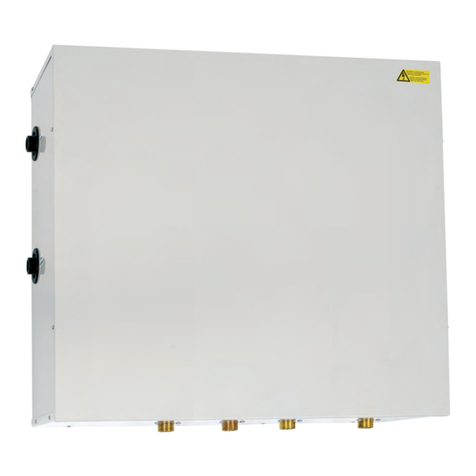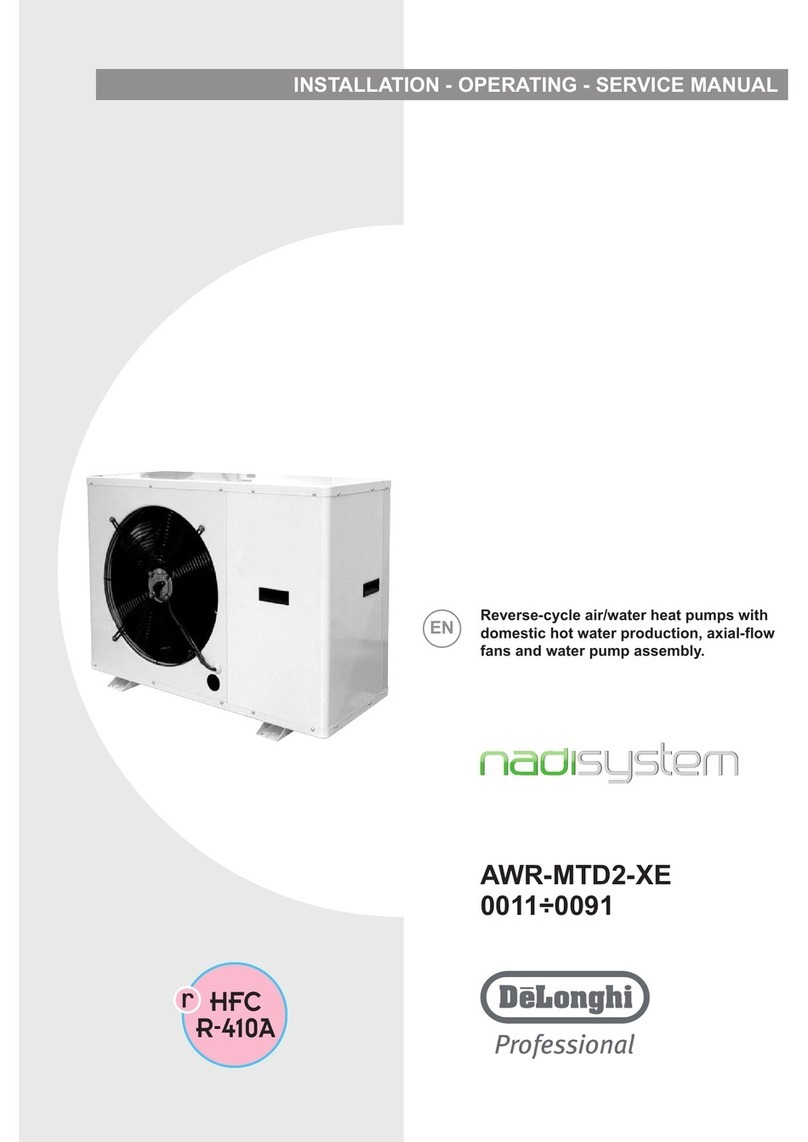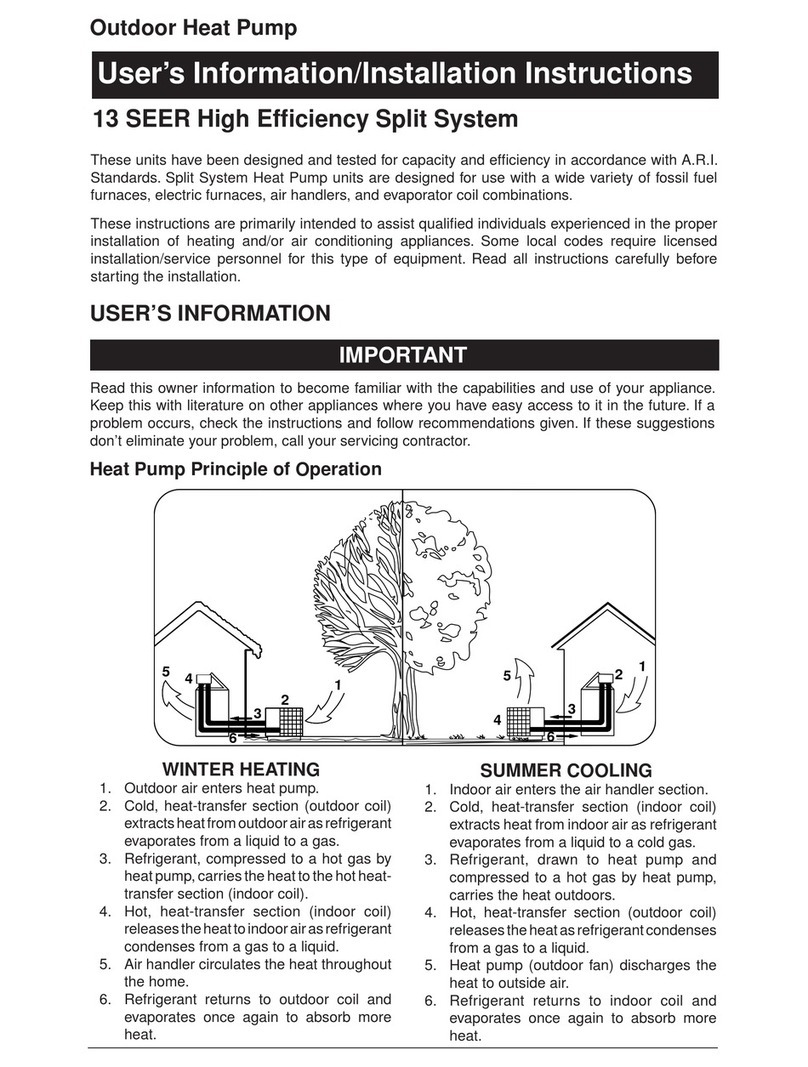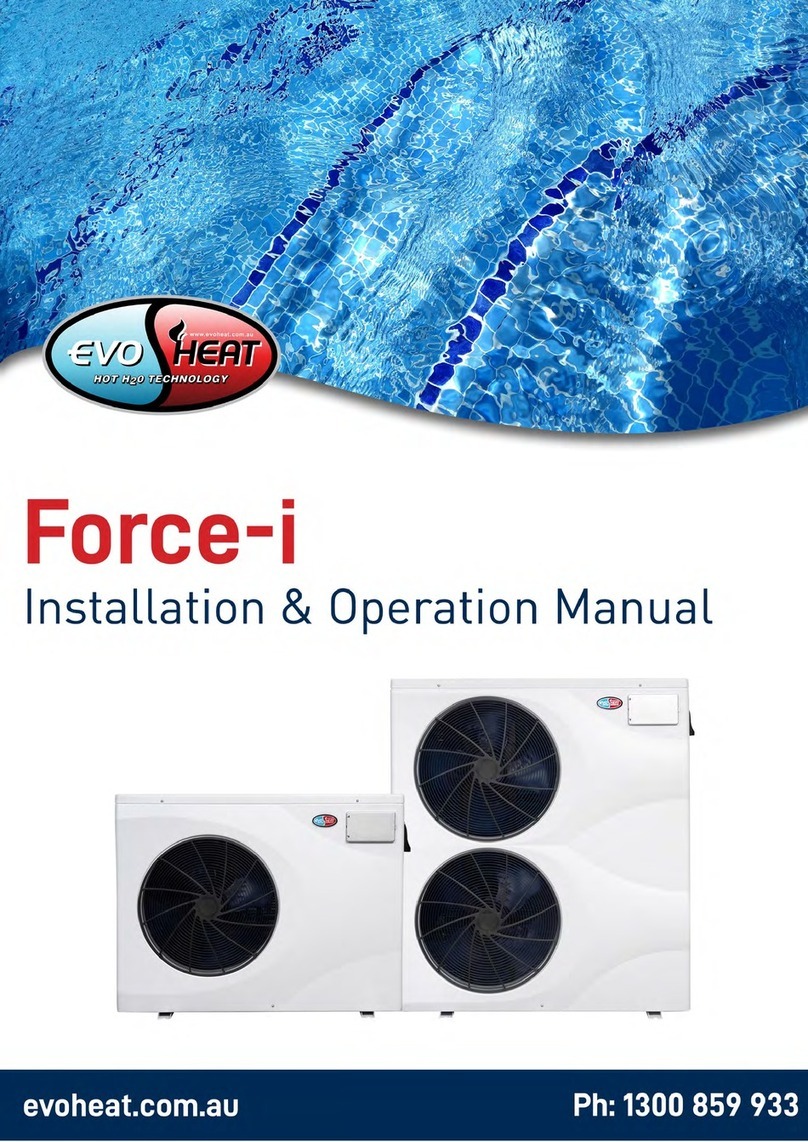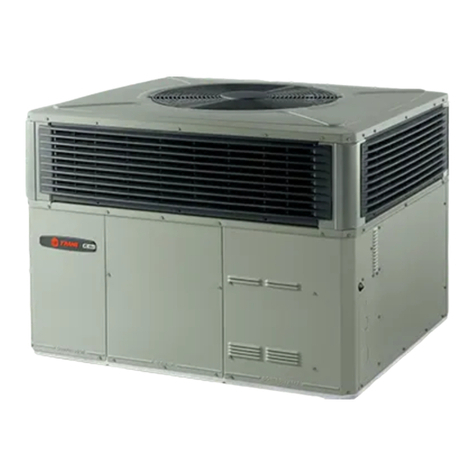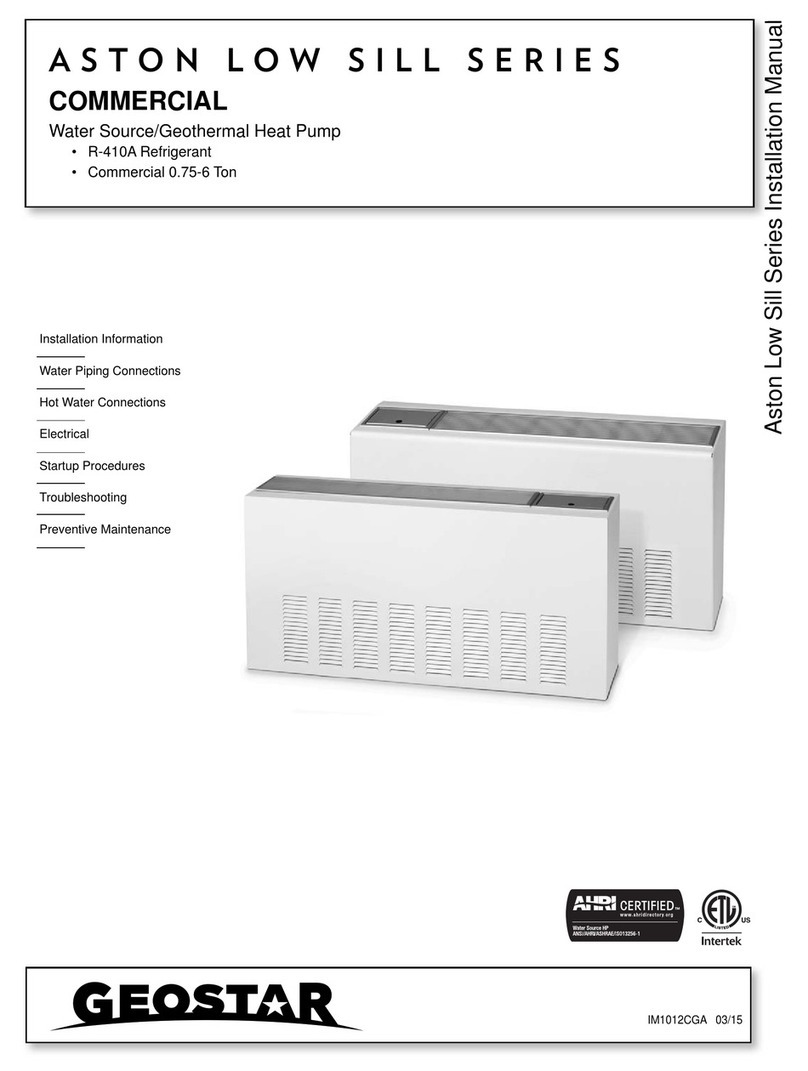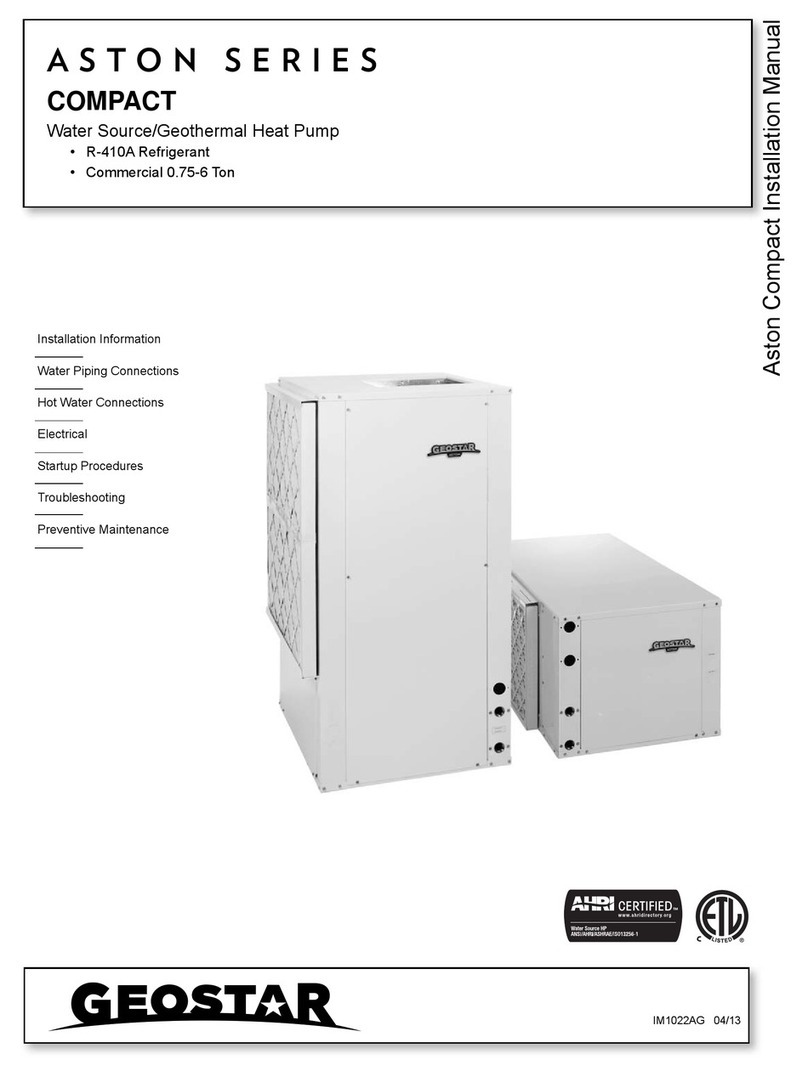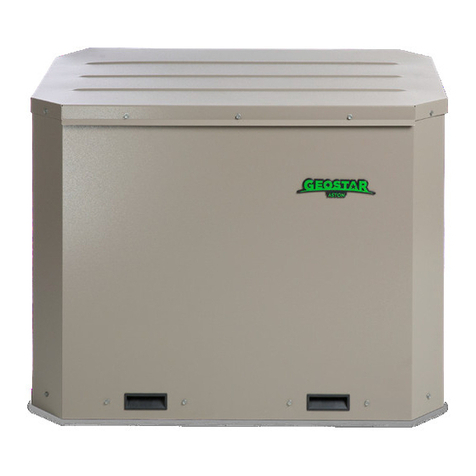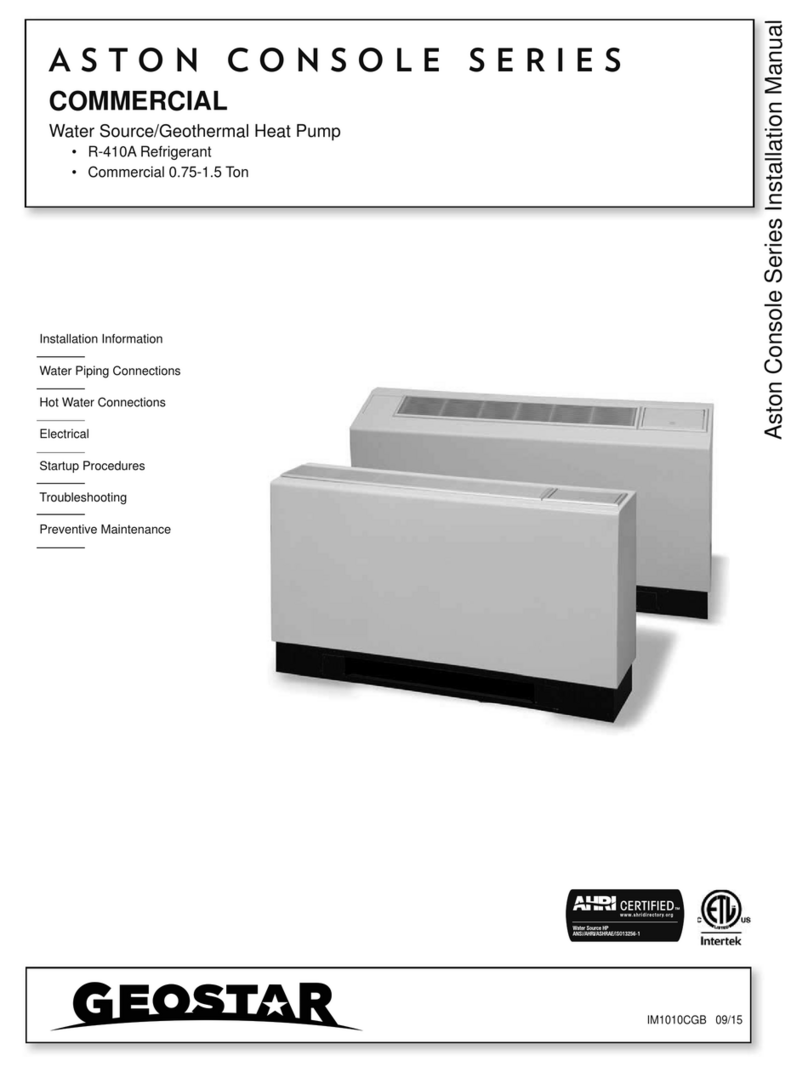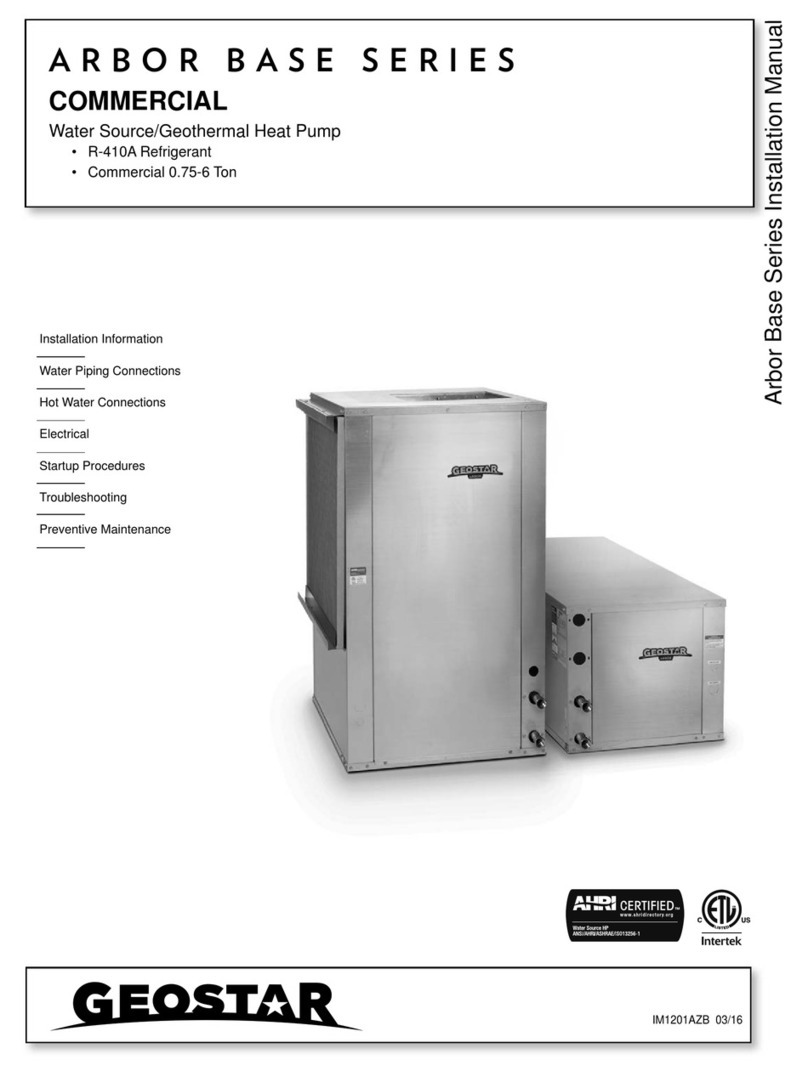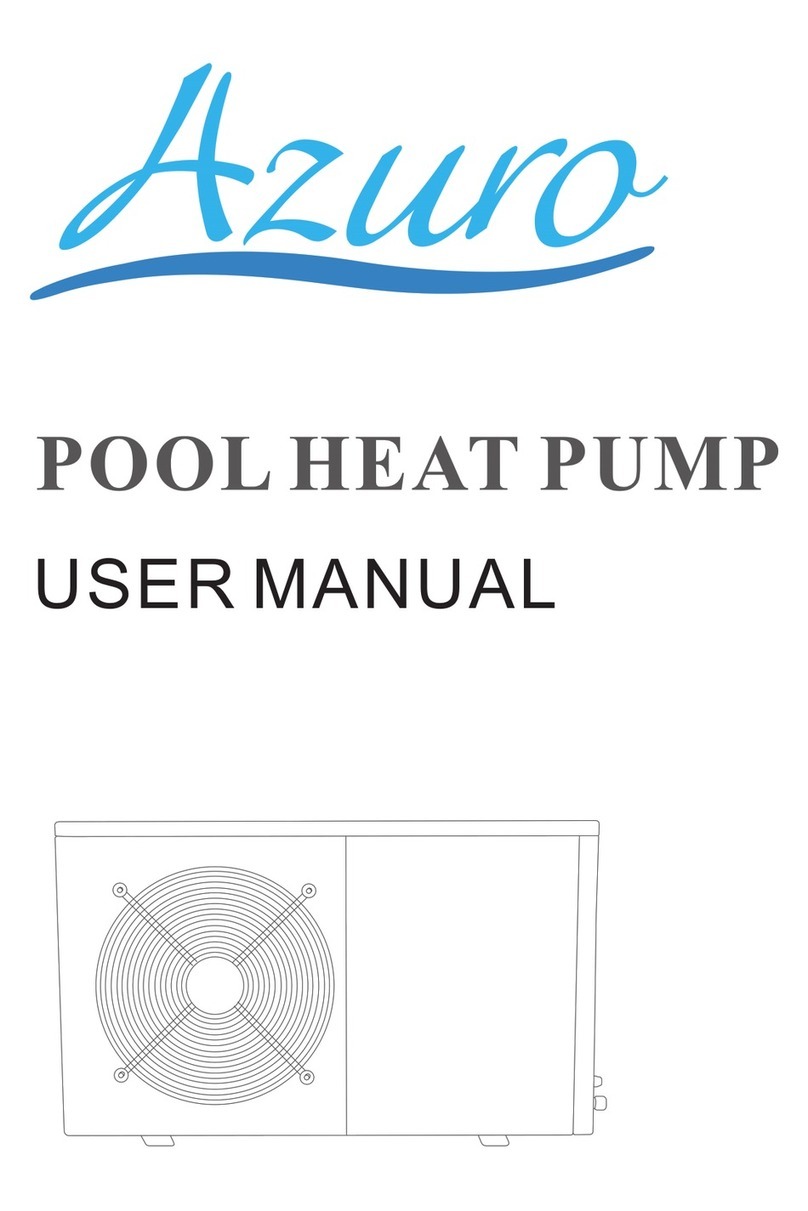
13
Hot Water Generator Connections cont.
Hot Water Generator Startup
1. Turn the hot water generator switch to the “ON” position. The hot
water generator switch will allow the hot water generator pump to
be enabled or disabled by the service technician or homeowner.
2. Close the drain valve to the water heater.
3. Open the cold water supply to the tank.
4. Open a hot water faucet in the building to bleed air from the
system. Close when full.
5. Open the pressure relief valve to bleed any remaining air from
the tank, then close.
6. If so equipped, turn the venting (burping) screw in the center
of the pump two (2) turns open (water will drip out), wait until
all air is purged from the pump, then tighten the plug. Use vent
couplings to bleed air from the lines.
7. Carefully inspect all plumbing for water leaks and correct
as required.
8. Before restoring electrical supply to the water heater, adjust the
temperature setting on the tank.
• On tanks with both upper and lower elements, the
lower element should be turned down to the lowest
setting, approximately 100°F. The upper element
should be adjusted to 120°F to 130°F. Depending upon
the specific needs of the customer, you may want to
adjust the upper element differently.
• On tanks with a single element, lower the thermostat
setting to 120°F.
9. After the thermostat(s) is adjusted, replace the access cover
and restore electrical supply to the water heater.
10.Make sure that any valves in the hot water generator water
circulating circuit are open.
11.Turn on the unit to first stage heating.
12.Use an AID Tool to enable HWG and select the desired water
heating set point. Selectable set points are 100°F – 140°F in
5°F increments (default 130°F). From the Main Menu of the AID
Tool select Setup, then AXB Setup.
13.The hot water generator pump should be running. When
the pump is first started, turn the venting (burping) screw (if
equipped) in the center of the pump two (2) turns open until
water dribbles out, then replace. Allow the pump to run for at
least five minutes to ensure that water has filled the circulator
properly. Be sure the switch for the hot water generator pump
switch is “ON”.
14.The temperature difference between the water entering and
leaving the hot water generator should be 5°F to 15°F. The
water flow should be approximately 0.4 gpm per ton of
nominal cooling.
15.Allow the unit to heat water for 15 to 20 minutes to be sure
operation is normal.
Plumbing Installation
1. Inspect the dip tube in the water heater cold inlet for a check
valve. If a check valve is present it must be removed or
damage to the hot water generator circulator will occur.
2. Remove drain valve and fitting.
3. Thread the 3/4-inch NPT x 3-1/2-inch brass nipple into the
water heater drain port.
4. Attach the center port of the 3/4-inch FPT tee to the opposite
end of the brass nipple.
5. Attach the 1/2-inch copper to 3/4-inch NPT adaptor to the side
of the tee closest to the unit.
6. Install the drain valve on the tee opposite the adaptor.
7. Run interconnecting tubing from the tee to hot water generator
water out.
8. Cut the cold water “IN” line going to the water heater.
9. Insert the reducing solder tee in line with cold water “IN” line
as shown.
10.Run interconnecting copper tubing between the unit hot water
generator water “IN” and the tee (1/2-inch nominal). The
recommended maximum distance is 50 feet.
11.To prevent air entrapment in the system, install a vent coupling
at the highest point of the interconnecting lines.
12.Insulate all exposed surfaces of both connecting water lines
with 3/8-inch wall closed cell insulation.
NOTE: All plumbing and piping connections must comply with local
plumbing codes.
CAUTION: Never operate the HWG circulating pump
while dry. If the unit is placed in operation before
the hot water generator piping is connected, be sure
that the pump switch is set to the OFF position.
Hot Water Generator Switch
The hot water generator switch is taped in the disabled position
at the factory.
ASTON SERIES INSTALLATION MANUAL






















